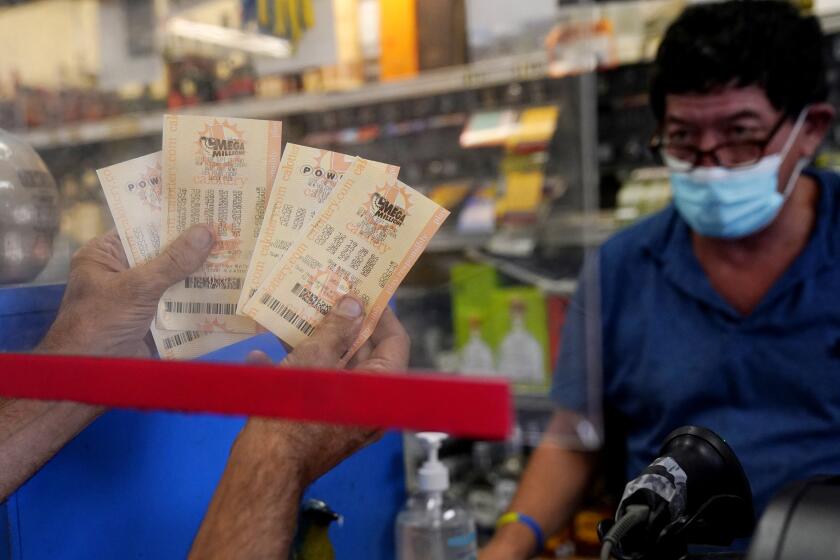Port Hueneme to house hundreds of minors who have crossed border
- Share via
At least 180 teenagers from Central America since last week have flooded into a makeshift holding facility at Port Hueneme, with the number expected to triple by next week as immigration officials seek to accommodate a surge of unaccompanied youths making their way across the southwest border.
The youths are among thousands of unaccompanied minors who have illegally crossed the Texas border since earlier this year, overwhelming that state’s detention facilities and prompting U.S. Department of Homeland Security officials to open overflow centers in several surrounding states, including California.
As of last count, Building 267 at the Naval Base Ventura County — a beige warehouse-type structure that previously served as a processing facility for sailors deploying overseas — is housing 180 unaccompanied children aged 13 to 17, mainly from Guatemala, Honduras and El Salvador.
Officials said the facility is expected to reach its maximum capacity of 575 children as early as next week.
As many as 90,000 minors are forecast to enter the U.S. this year without their parents or guardians, Obama administration officials have said. Often fleeing violence and squalor in their home countries, children cannot be sent back as easily as adults can.
Within 72 hours after the children are detained at the U.S. border, sometimes after traveling hundreds of miles, they essentially become wards of the U.S. Department of Health and Human Services until they can be placed with a family member or a sponsor in the country. A judge then determines whether the children can stay in the U.S.
The emergency facility on the naval base in Port Hueneme, where the children are temporarily fed, educated and cared for, is a response to what administration officials have called a “humanitarian crisis” on the country’s borders.
The center opened Friday, run by a contractor called Southwest Key, with costs for the facility’s operation borne by the federal government. Obama administration say the costs for taking care of unaccompanied children entering the U.S. could exceed $2 billion next year.
The Department of Health and Human Services conducted a media tour of the facility Thursday on the condition that reporters not quote the officials giving the tour.
Reporters were neither allowed to talk to the children nor photograph the facility, a large warehouse surrounded by a lightly guarded chain-link fence.
As reporters arrived, boys hooted in competition as they played soccer in a large dirt field outside the building, wearing new clothing and grey hoodies provided to them by the government.
Officials said the youngsters often arrive in the U.S. with tattered clothing, and as part of their physical and mental evaluations, the children frequently have to be treated for lice and scabies before they reach the temporary holding facility.
None of the security staff seen at the front gate appeared armed. Officials said weapons are not allowed at the facility.
Days begin at 5:45 a.m., include blocks of time for physical education, classes, two periods for showering, a period of time for movie or TV, then lights-out at 9:30 p.m.
Meals are held outside three times a day in large white tents, officials said, with children allowed to have seconds if they want. Thursday’s dinner was expected to be vegetable lasagna with meatballs, sautéed zucchini and parsley bread, according to a menu.
Inside, the building was brightly lit with blue-painted cement floors, two Ping-pong tables, a Foosball table and several couches.
Staff in colored shirts and squawking walkie-talkies constantly swirled around the facility, leaving no child unaccompanied. Some of the children appeared in fine spirits and well behaved, briefly chatting with the staff about the first day of the World Cup soccer tournament as they passed. Officials said there is one staff member for every 12 children.
A large group of boys watched the first World Cup match between Croatia and Brazil and roared with joy after a goal. Another group of girls in pink hoodies drew a large poster in art class, with one group of girls working on a banner featuring their names and the Guatemalan flag.
Many of the drawings hanging on the walls featured flags of Central American countries or drawings of people with body parts named in English and Spanish. Officials said the children arrive speaking little to no English, which they are taught at the facility.
Sleeping areas are separated by gender and feature dozens of bunk beds spaced about five feet apart from each other with private locker spaces for each child. During the media tour, the sleeping areas appeared tidy, and the bathrooms, which featured private showers and bathroom stalls, appeared clean and had soap available. Water was widely available around the facility.
Laundry services by staff ran 24 hours a day, and the children are monitored and have access to the bathrooms day and night, officials said.
The children are allowed two 10-minute calls to family a week, officials said, adding that the facility has 45 Spanish-speaking case workers to help locate a family member or sponsor who can claim the children for release on the condition that they bring the child to an immigration status hearing later.
Of the 180 children counted at the facility as of Wednesday, 12 had since been released to a family member or sponsor. Officials said the average stay for a child at the facility so far has been five days.
More to Read
Sign up for Essential California
The most important California stories and recommendations in your inbox every morning.
You may occasionally receive promotional content from the Los Angeles Times.














